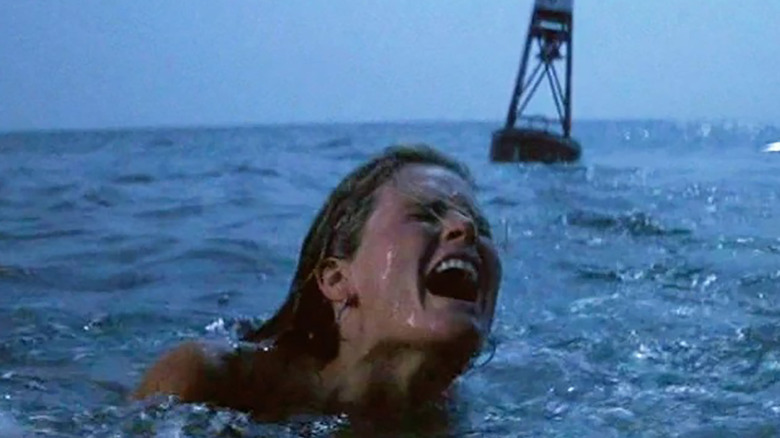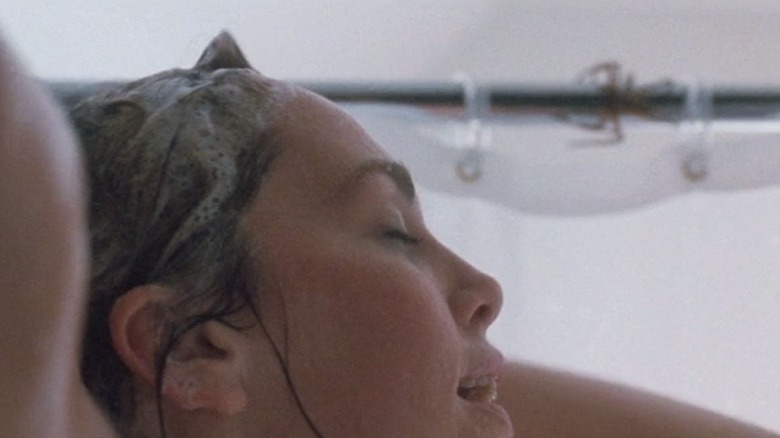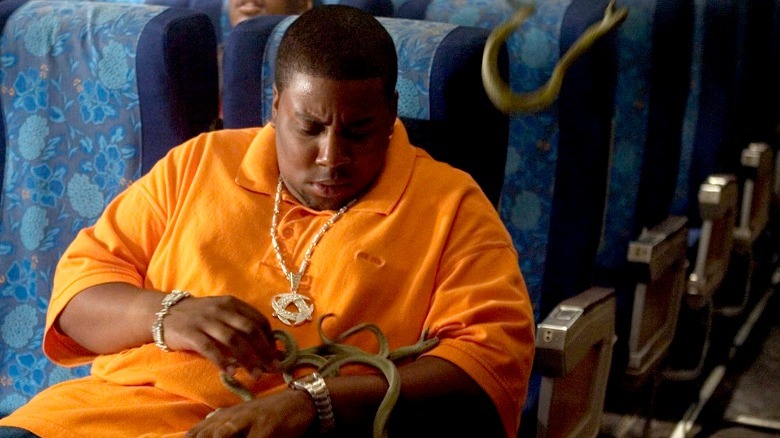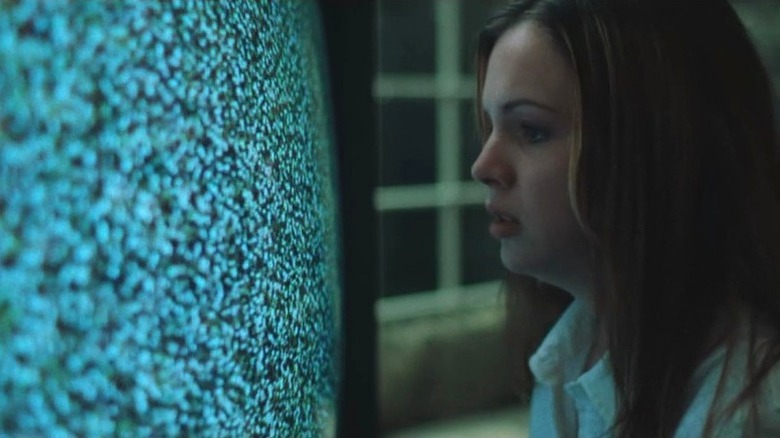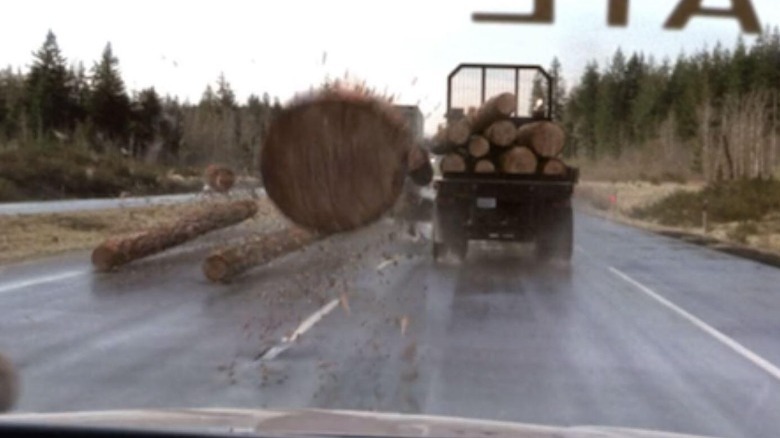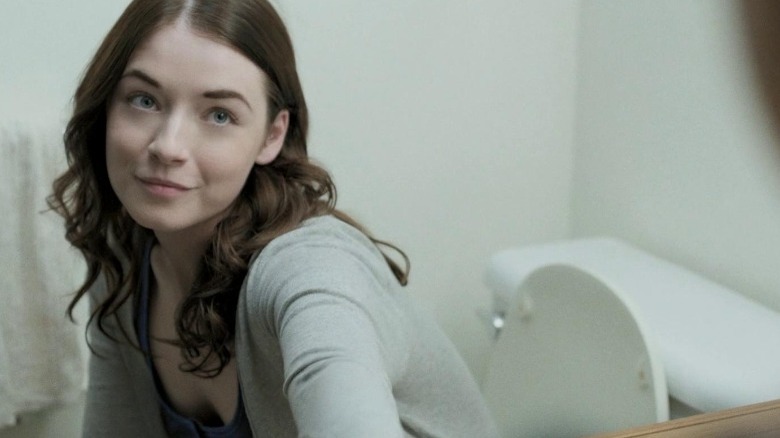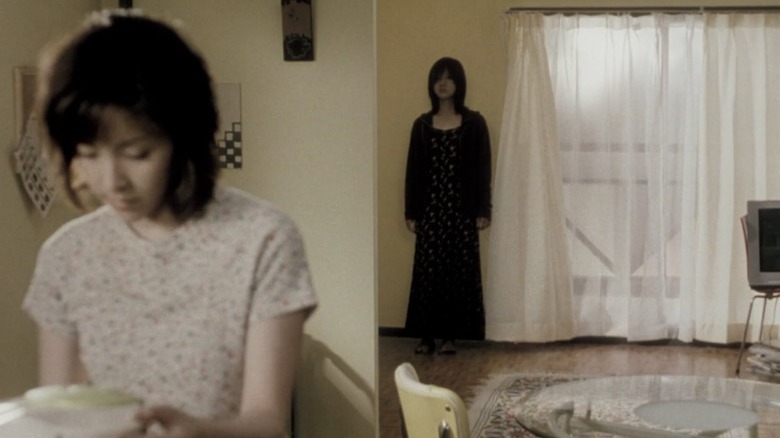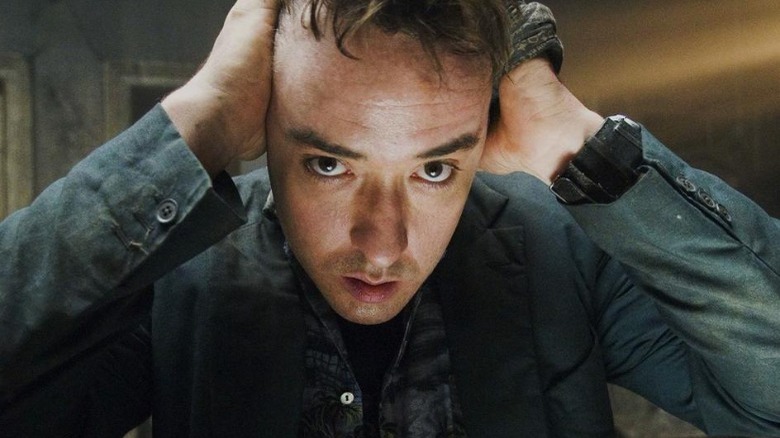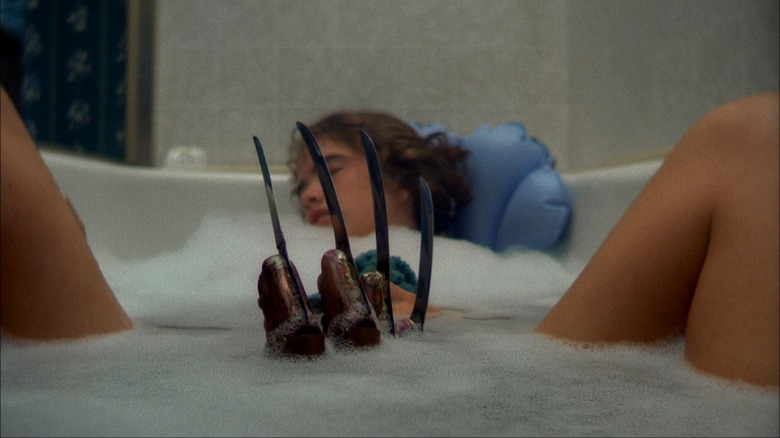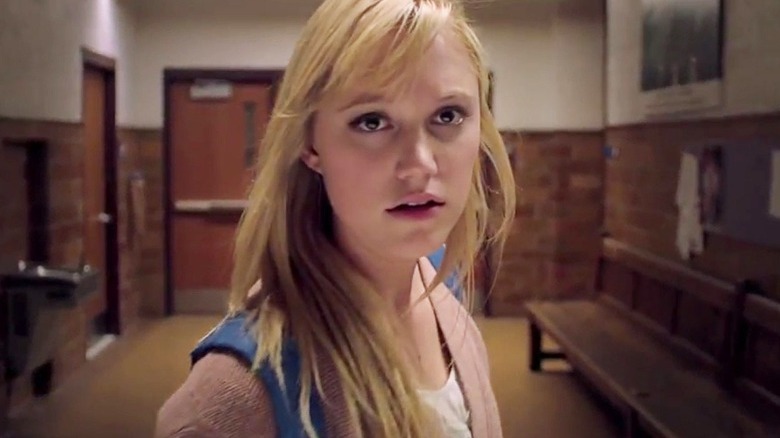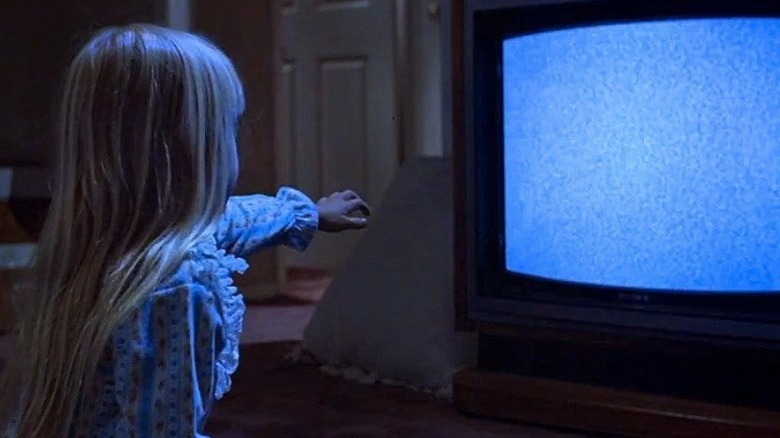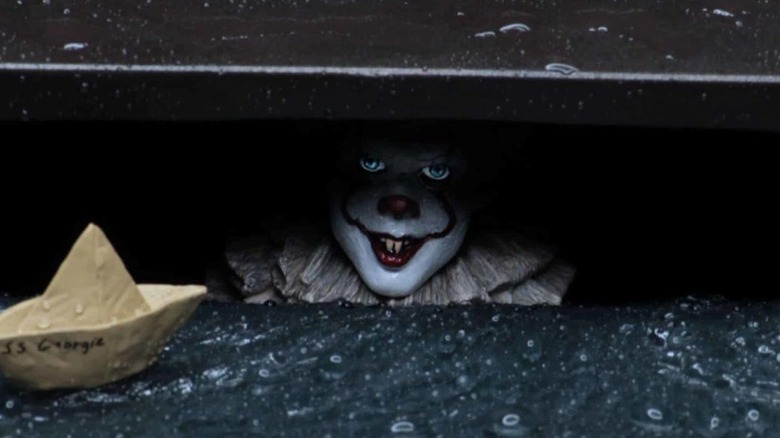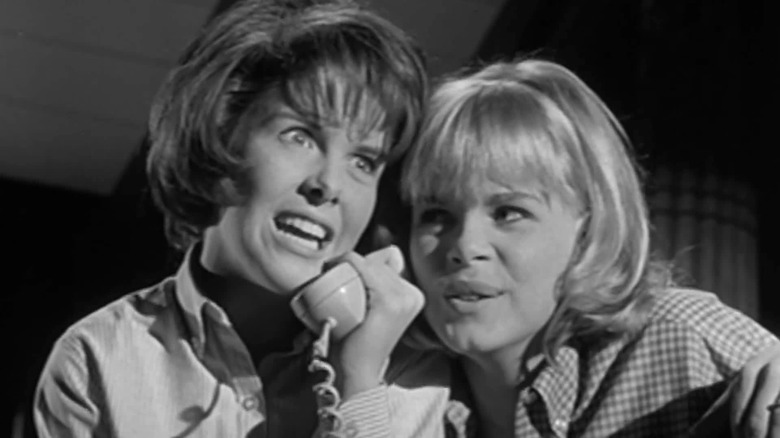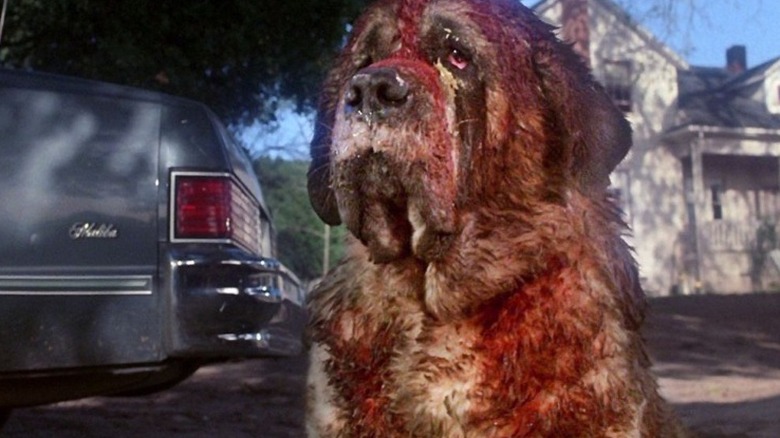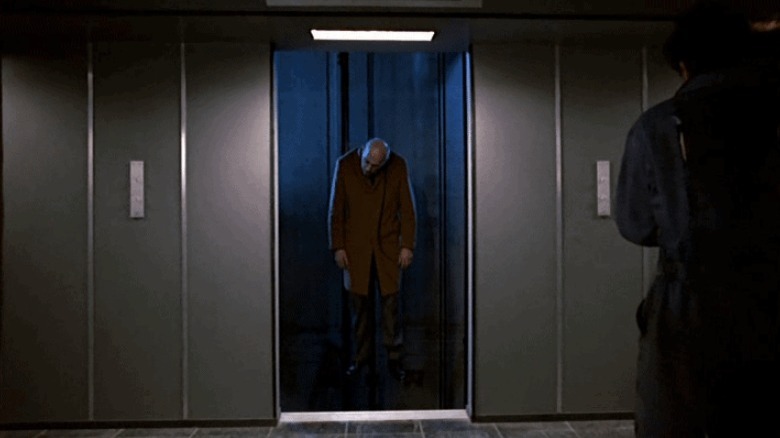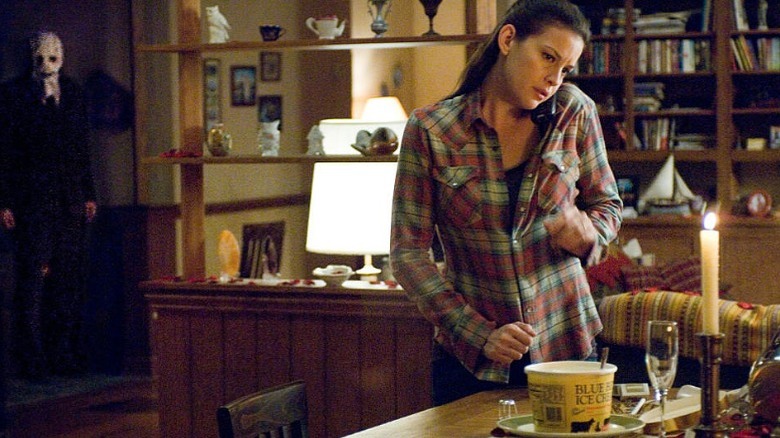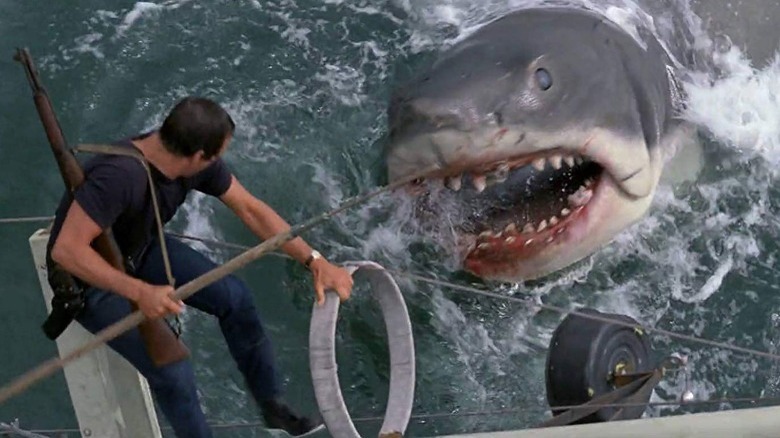16 Horror Movies That Ruined Everyday Activities
Horror movies can scare you in a lot of different ways. Some use explicit gore and visceral violence to terrify, while others exploit deeply-held religious beliefs to haunt long after the credits roll. There are imports and exports, a transnational stage where distinct, individual fears are rendered global. The advent of social media has illuminated, perhaps better than ever, the kinds of fears people experience in their day-to-day lives. As a result, horror filmmakers are more adept than ever at twisting the knife just a little bit deeper by exploiting the common fears most everyone holds to be true.
A mix of famous classics and underrated gems, these 16 movies, in their own unique way, ruin the things people do almost every day. Imbuing them with a sense of ominous aura and imminent terror, they have the capacity to turn every moment of one's life into a beat from the "Final Destination" franchise, where death waits around every corner.
Arachnophobia – showering
Though "Psycho" might have the most famous shower death in cinema history — a scene gloriously aped in 2022's "Scream" — it isn't exactly the most applicable. After all, not many people spend their nights showering at a rural motel run by a burgeoning serial killer. That being said, there is one movie whose shower scare is bound to haunt viewers every time they turn on the water.
In Frank Marshall's "Arachnophobia," a foreign species of spider runs rampant in a small California town. It's up to Jeff Daniels' newly-arrived doctor to stop the threat before it grows out of control. In the early beats, Marshall delights in teasing the spiders' presence. They're always just out of sight, hidden in lampshades or crouched in the dark, with Marshall milking the tension for everything it's worth. In one standout sequence, a young woman (Cori Wellins) takes a shower, unaware that a spider has crawled in next to her. In a mix of wide shots and close-ups of Wellins (with implied, not explicit, nudity), the spider crawls all over her while the young woman showers without a care in the world. It's a cruel bout of tension, but incredibly effective.
Snakes on a Plane – flying
Director David R. Ellis features here for the first of two films, making it clear that the late director loved nothing more than ruining travel in all its forms. Reshot on account of fan interest and a desire to amp up the film's more explicit elements, "Snakes on a Plane" was released in the summer of 2006. While it never soared to the financial heights executives might have hoped for, it remains a deliciously campy cult classic.
Flying is an innately terrifying experience. Largely on account of having no control, there are few people who actively feel comfortable while hurtling through the air in an enormous aluminum tube. Ellis makes it worse by adding hundreds of deadly snakes to the mix. In combining two of the most common fears, "Snakes on a Plane" remains darkly compelling and genuinely frightening, despite being flanked by bouts of broad comedy from star Samuel L. Jackson. There are pythons, cobras, and all manner of venomous serpents. Better still, Ellis deploys them at the most surprising times. They're in oxygen masks, hidden in toilets, and coiled in overhead compartments. Silly as it may seem, it might be worth checking for snakes the next time you take a flight.
The Ring – watching movies
"The Ring" is one of the scariest movies ever made. While Hideo Nakata's original is a classic in its own right, director Gore Verbinski's rendition is a rare example of a remake exceeding the original. Perhaps on account of simply releasing later or a more assured grip on the source material, Verbinski's remake is a dour, compelling, and genuinely haunting foray into techno, analog horror. While its efficacy might have waned some in the years since release — largely because outside of collectors and analog buffs, VHS tapes are all but nonexistent — it still renders the simple process of watching a movie as scarier than it ought to be.
The story of a cursed video cassette that kills viewers seven days after watching it, "The Ring" was released at the perfect time. As technology converged, analog fell away, and digital became the norm; the general, post-Y2K consensus was that technology, writ large, was scary. Common consumers never quite understood how the rapidly advancing technology in their living rooms worked, and it was all too easy to apply sinister intentions. Why couldn't a VHS tape be used to kill? Really, with content more readily available than ever, a cursed movie could easily spread like wildfire. With renewed interest in the role of media and the content therein, "The Ring" has reemerged as an especially prescient bout of cinematic terror.
Final Destination 2 – driving
There likely isn't a single driver today who isn't at least remotely familiar with the opening premonition from director David R. Ellis' "Final Destination 2." In a franchise abounding with life-ruining depictions of death — including car washes, Lasik, pools, and escalators — it's the first premonition in the second entry of the long-running franchise that has endured the strongest. In it, the chain to a logging truck snaps, sending enormous, giant logs bouncing down the freeway. They crash into cars, impale drivers through the windshield, and result in one of the series' most grisly opening acts.
As a result, there are few (if any) drivers who aren't inclined to change lanes when they find themselves behind such a truck. Though the odds of it actually happening are astronomically low, the visceral nature of Ellis' staging ensures it's going to stick in your mind. Driving is a risky endeavor to start with, though it's made all the worse when imagining the worst possible scenarios that might occur on a slick, heavily trafficked road.
Emelie – hiring a babysitter
Director Michael Thelin's "Emelie" is criminally underrated. A reversal of a common horror trope — the babysitter in peril — Thelin and screenwriter Richard Herbeck reimagine an everyday occurrence for millions of families where the babysitter isn't the target, but the threat. Sarah Bolger's Emelie kidnaps a family's hired babysitter and poses as her, her motives unclear at the start. Immediately, the audience is aware, and Thelin milks the tension for all its worth. Even audience members without children will be gripping their armrests at the thought of a sinister stranger left alone with their children.
Given its indie roots, "Emelie" goes down a darker route than most of its ilk, though Thelin is wise enough to ensure things never get too exploitative or graphic. With common fears of a hospital's "code pink" (the warning that a child under 12 months is suspected missing), it's all too easy to buy into Thelin's innately terrifying scenario. Especially for parents, it's likely going to be a long time before they hire another babysitter.
Pulse – using the Internet
Kiyoshi Kurosawa's "Pulse" is a cult classic for good reason. Arguably one of this century's scariest movies, it adroitly taps into an enduring fear of the internet, social media, and burgeoning concerns of how the internet writ large exacerbates isolation and loneliness. The internet is already a scary place, replete with disinformation, violence, diminishing privacy, and colloquial stranger danger. Kurosawa imagines a worst-case scenario where the internet, quite literally, can kill.
Told in dual timelines, the movie's dense, cryptic narrative is best conceptualized as a ghost story. In effect, the spirit world is simultaneously lonely and overcrowded, and resultantly, ghosts have made use of the internet to ingratiate themselves back into the real world. Abounding with gothic imagery, terrifying specters, and the scariest use of dial-up internet tones ever committed to screen, "Pulse" renders an already scary digital realm even scarier. In addition to covering ones' webcam, it might be worth ensuring the ghosts don't have easy access to your hardware.
1408 – staying in a hotel
Stephen King has had a lot of his works adapted to film. Some of them good ("The Shining"), and some of them not so good (looking at you, "A Good Marriage"). An iconic horror writer, basically a maestro, his movie adaptations are so diverse, they might as well encompass a horror subgenre all their own. Director Mikael Håfström's "1408," adapted from King's short story of the same name, is curiously lesser-known. Though it isn't one of his most popular works, its adaptation remains one of the early aughts' scariest movies, one guaranteed to make audiences think twice before they book another hotel room.
John Cusack stars as Michael Enslin, an incredulous author whose beat is paranormal skepticism. Driven by grief and estrangement from his wife, he opts to take it out on the ghosts he doesn't believe exist. Consequently, he books room 1408 at The Dolphin, an ostensibly haunted hotel. Unfortunately for Michael, room 1408 is genuinely haunted. With a mix of conventional ghosties, temporal loops, and suffocating paranoia, "1408" makes excellent use of its limited scope, turning a standard hotel room into a hotbed of terror.
A Nightmare on Elm Street – sleeping
One, two, Freddy's coming for you. Three, four, better lock your door. Freddy's rhyme is as iconic as the titular movie monster himself, and even those who haven't seen Wes Craven's 1984 masterpiece likely know how it ends: never sleep again. Truly, Craven subverted the slasher subgenre ingeniously with his villainous Freddy Krueger, a deranged serial killer who targets his victims in their sleep. Existing in a kind of nightmarish dreamscape, the only way to evade Krueger is to stay awake, a feat easier said than done. After all, everyone needs sleep.
Though the franchise grew increasingly sillier as it progressed, both the original and its 2010 remake make great use of everyday tasks to combat drowsiness. Protagonists drink excessive amounts of coffee, burn themselves with cigarette lighters, and even suffer from micro naps when they've been awake for too long. Even scarier is how Craven conceived of the idea after reading about a real series of unexplained deaths among Cambodian refugees. While most movies inspire nightmares, "A Nightmare on Elm Street" endures on account of the suggestion those nightmares might actually kill you.
It Follows – making love
It's a shame that director David Robert Mitchell hasn't released a new movie in over four years, and even worse considering "It Follows" remains his only genre effort. An ingeniously crafted campfire tale, Mitchell's horror story is hallucinogenic, disconcerting, difficult to contextualize, and thoroughly terrifying. The central gimmick is a curse. Though curses are not unusual in the horror genre, Mitchell subverts expectations in crafting how the curse spreads. A looming specter poised to stalk victims until it catches and kills them, the curse can only be spread through sex. One partner passes it to another in a kind of causal loop. If the person to whom it is passed dies, it reverts to the person before, ensuring that at any moment of any day, "it" is following someone.
The origins of "it" remains unclear, though Mitchell excels at exploiting sexual anxiety, suburban ennui, and detached adolescence as a vehicle for the scariest STD ever seen. With an inextricably cinematic presence (most scares amount to the simple image of "it" wandering toward the protagonists in the background), "It Follows" was a classic of the genre immediately upon release. Merging John Carpenter with David Cronenberg, "It Follows" will have everyone just a little more mindful of who they choose to be intimate with.
Poltergeist – watching television
At the end of director Tobe Hooper's "Poltergeist," Craig T. Nelson's Steve Freeling famously rolls the television set out of the family's motel room, the lot of them having recently escaped the poltergeist activity in their house. It's a genius comedic moment given that in no small part, their old television was a conduit for the activity they faced. Truly, "Poltergeist" revitalized the haunted house subgenre, shifting the paranormal activity from gothic coastal manors right to the suburbs. A regular family, not a group of gothic denizens with rich histories and suspicious lineage, was at the center of it.
Fun and scary in equal measure, "Poltergeist" pushed the boundaries of what PG horror was at the time — and contributed to the advent of the PG-13 rating. It took a common household object, the television set, and rendered it terrifying. The center of gravity for most nuclear families, images of a family gathered together around the television were replaced with ghastly ghostly faces, spectral hands, and bolts of electricity desperate to kidnap living souls. It's hard to imagine anyone looking at their big, hulking tube television sets the same way again. However, not even flat screens are safe, with the 2015 "Poltergeist" remake showing they're just as capable of letting the undead in.
It – walking by sewer drains
The inciting attack on little Georgie Denbrough is arguably the most famous scene in any iteration of Stephen King's "It" — from the novel, to the made-for-TV adaptation, to Andy Muschietti's 2017 remake. A perfectly calibrated horror beat, it taps into primal fears and swiftly establishes just how threatening Pennywise the Dancing Clown really is. Where the made-for-tv adaptation is bolstered by Tim Curry's sensational performance as Pennywise, it's Muschietti's iteration that emerges as the most effective, largely on account of how brutal and unforgiving it is.
In both the novel and original adaptation, Georgie is killed after Pennywise bites his arm off and leaves him to die. In the remake, Georgie's arm is still bitten off in a graphic sequence, but instead of being left to die, he is dragged into the sewer, rendered a missing person for the bulk of the runtime. King's scene is abounding with unconventional elements. It happens during the day and it happens in the ostensible safety of a suburban street. After Georgie's paper boat floats into the sewer, he's greeted by Pennywise, who keeps him engaged long enough to strike. It's a homicidal clown in a sewer, largely obscured by the height of the drain itself. Fans of "It" likely think twice before hopping the curb over a storm drain now.
I Saw What You Did – prank calls
Pranks calls might have fallen out of favor among adolescents, though there's no denying that for a great many young people back in the day, prank calls were a rite of passage. Calling a crush or spamming a frenemy with weird calls yields a joy like no other. It's juvenile and deeply silly, yes, but so are most things young people do. William Castle's "I Saw What You Did," however, imagines the worst possible prank calling scenario. Two young girls spend their evenings pranking random phone numbers, often starting with, "I saw what you did, and I know who you are." One evening, they call Steve Marak (John Ireland), a man who has just murdered his wife and buried her in the woods. Their prank leads Steve to believe he's been genuinely found out, so he sets about tracking them down to silence them.
With the inimitable Joan Crawford as part of the central cast, trademark suspense from Castle, and a seriously fun high-concept premise, "I Saw What You Did" excels. It's a movie tailor-made for adolescent sleepovers, the kind of movie young people will watch from between the fingers, second-guessing whether they'll ever make a prank call again.
Cujo – having a pet
Dee Wallace's performance in Lewis Teague's "Cujo," an adaptation of Stephen King's novel of the same name, is arguably one of the strongest performances ever in a King adaptation. Nothing against Shelley Duvall or Kathy Bates, but Wallace delivers a gangbusters performance as a mother trapped in a car with her young son while a rabid St. Bernard roams the grounds. It's not an especially showy performance, but it's exceptionally committed, almost powerful enough to distract you from how terrifying dogs can be. Almost.
Though the titular Cujo isn't Wallace's dog, the point stands. "Cujo" will make any dog owner second guess their own canine companion. Given how sweet and wonderful puppies can be, it's easy to forget that they could easily take most people down. "Cujo's" St. Bernard doesn't skimp on the canine carnage, either. This dog is vicious. He's calculated, cruel, and relentless, and while he doesn't represent all or even most dogs, he's scary enough to cultivate doubt, at least for a moment.
The Lift – riding the elevator
Dick Maas' "The Lift," originally titled "De Lift" in Dutch, isn't strictly speaking a good movie. While it's better than Maas' own 2001 remake "Down," starring Naomi Watts, it's too much of an oddity to work as anything more than a kind of cult curiosity. That being said, Maas does at least manage to tap into a perennial fear, one that stretches all the way back to the infamous "Room for One More" urban legend: Elevators are scary.
With a combination of relinquishing control, claustrophobia, and acrophobia, few people genuinely enjoy elevator rides. Sure, they're convenient, but the minute the cage rattles or the cables jangle, it's impossible not to imagine oneself plummeting several stories to their death. "The Lift" amounts to little more than a killer elevator. It's ridiculous, yes, but as the cables decapitate workers, people fall down the shaft, and doors refuse to open, it's effective enough. The grisly nature of Maas' elevator is all but guaranteed to ensure people take the stairs.
The Strangers – being home alone
In all fairness, most people don't exactly like being home alone, but it's usually inevitable. At some point, any given person is going to be on their own. Maybe there's a thunderstorm outside, or, drawing on old urban legends, news reports of an escaped madman from the local prison. In the case of Bryan Bertino's "The Strangers," maybe it's three masked strangers, toying with their prey before they move in for the kill.
The latter half of "The Strangers" remains a contentious point for most horror fans; some love it, and some contend it loses the suffocating tension of the early half. However, an early scene involving Liv Tyler's Kristen, home alone while her boyfriend, James (Scott Speedman), runs to grab cigarettes, is one of the century's most effective horror sequences. As she wanders through the home, charging her phone and grabbing a glass of water, she's unaware that someone has already gotten inside. It's painfully tense, with Bertino milking the sequence for as long as possible. It's guaranteed to inspire weeks' worth of checking over one's shoulders while home alone, just in case.
Jaws – swimming
The legacy of "Jaws" almost goes without saying. The greatest shark movie ever made — and arguably the greatest there ever will be — is responsible for an entire generation's fear of the water. "Jaws" all but dared its audience to never go swimming again. Steven Spielberg's adaptation of Peter Benchley's bestseller of the same name turned the beaches into a hotbed of terror. Though the likelihood of a great white shark appearing off the coast of a New England town and terrorizing its denizens is all but nonexistent, that didn't stop audiences from quickly assuming the worst.
From its landmark opening sequence to the trio of sensational main characters, "Jaws" is the apotheosis of blockbuster cinema for good reason. It's big, it's scary, and it renders a simple trip to the beach as an exercise in terror. Whether ocean, lake, or pool, it's impossible to forget the visceral images of a great white's dorsal fins breaching the surface. Who needs to swim, anyway?
